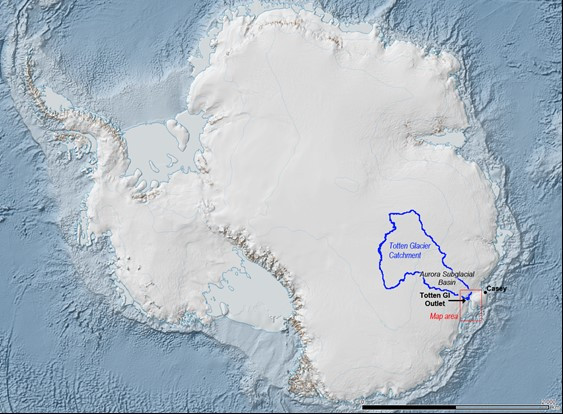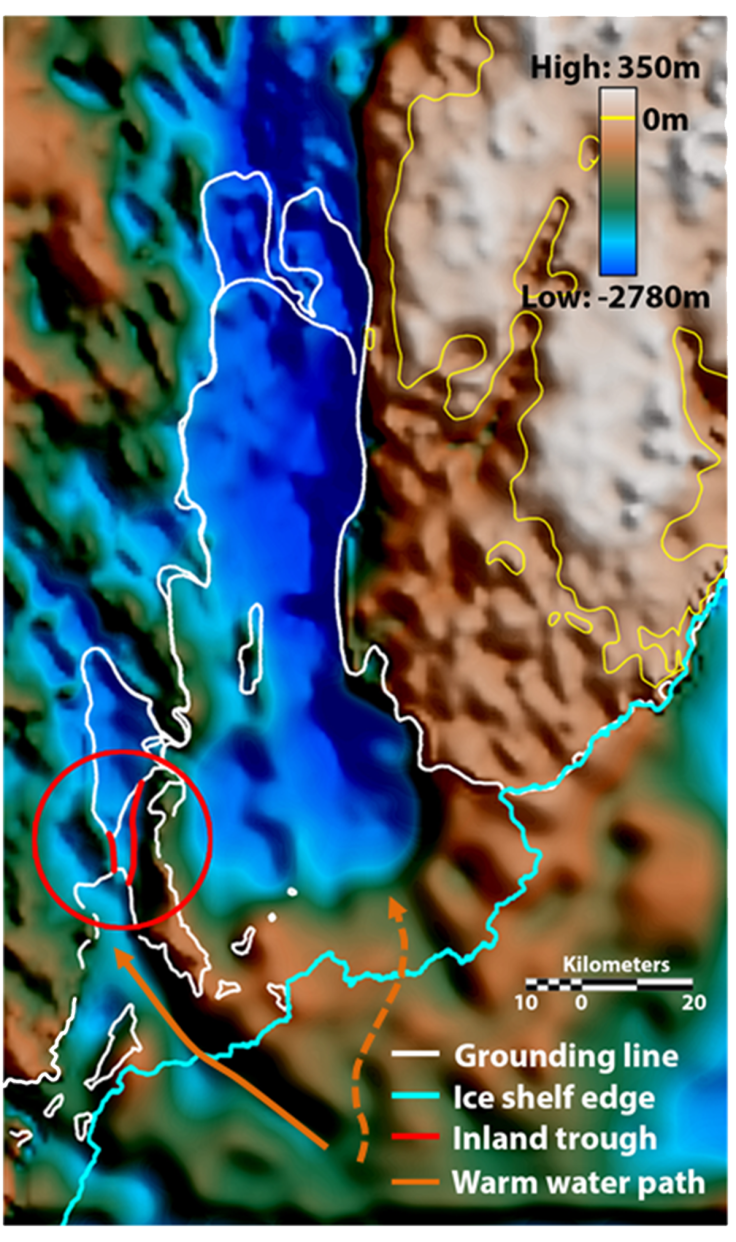Antarctica Totten Glacier melting: Irreversible sea level rise caused by warm water valley

A valley has been discovered beneath one of East Antarctica's glaciers, via which warm water is delivered, causing significant melting, scientists have said. The Totten Glacier is East Antarctica's most rapidly changing glacier. It is 65km long, 30km wide and, if it melted, contains enough water to raise global sea levels by 3.5m.
A study published in the journal Nature Geoscience notes how the Totten Glacier has been thinning considerably over recent years. To find out why, scientists surveyed the area using radar and other geophysical techniques to map the landscape beneath the glacier.
Findings showed a 5km wide valley running underneath the glacier that lets warm ocean water reach the ice base. Thin ice at the margins of ice sheets can float on the ocean, but the ice inland is grounded with the bedrock. This newly-discovered valley means warm water can flow under a region of floating ice, exposing the edge of the ice sheet to higher temperatures, resulting in glacier melting.
Previously, it was thought the East Antarctic Ice Sheet was surrounded by colder water, so was relatively stable compared with the smaller, more at-risk West Antarctic Ice Sheet. The Totten Glacier becoming unstable could lead to more ice inland becoming vulnerable to change.

Study co-author Martin Siegert, from Imperial College London, said: "It's only one glacier, but it's changing now and it is significant for sea levels globally. The 3.5 metre rise may take several centuries to complete, but now the process has started it is likely irreversible. This is another example of how human-induced climate change could be triggering major changes with knock-on impacts that will be felt globally."
"Once a certain region starts to change, the implications for the connected ice are potentially significant. We are using computer modelling to understand whether changes in Totten Glacier could lead to changes in both adjacent and more distant places in Antarctica. While this work needs to be undertaken, the change at Totten Glacier itself is significant and concerning."
At present, warming ocean temperature as a result of climate change is expected to cause sea levels to rise by about one metre every century. The Totten Glacier melting could be a big component of this change.
Lead author Jamin Greenbaum said: "We now know there are avenues for the warmest waters in East Antarctica to access the most sensitive areas of Totten Glacier.
"Now we know the ocean is melting ice in an area of the glacier that we thought was totally cut off before. Knowing this will improve predictions of ice melt and the timing of future glacier retreat."
Scientists plan to continue to map the unknown landscapes beneath the Antarctic ice in order to understand the continent.
© Copyright IBTimes 2025. All rights reserved.






















